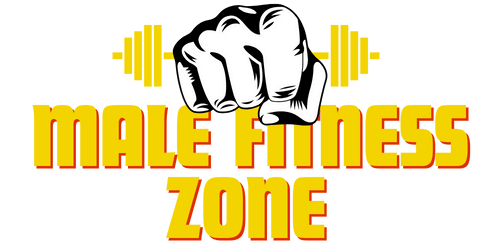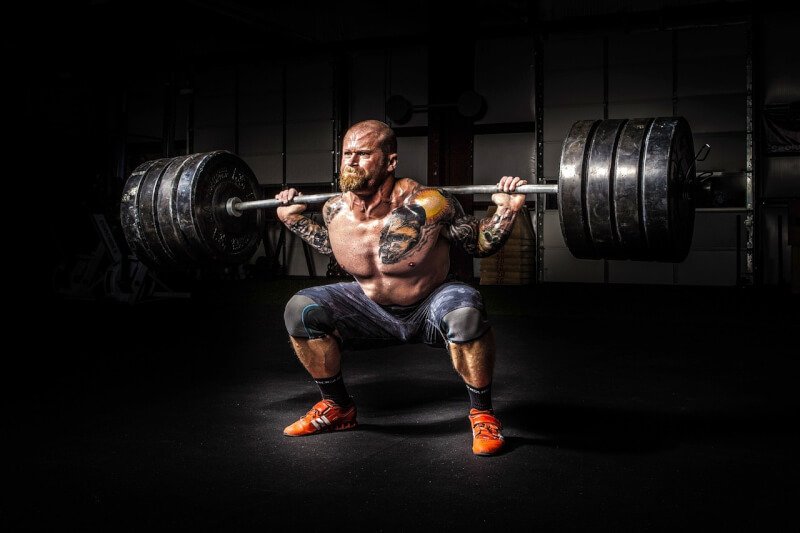Have you ever wondered if all those fitness myths you’ve heard were actually true? In the world of health and wellness, it’s easy to get caught up in all the rumors and misconceptions. But fear not! In this article, we’ll be exploring and debunking the most common fitness myths that might be holding you back from reaching your goals. So, sit back, relax, and prepare to finally separate fact from fiction when it comes to achieving a fit and healthy lifestyle.

Myth 1: Spot reduction can target specific areas for fat loss
Exploding the Myth
One of the most pervasive fitness myths is the belief that you can target specific areas of your body for fat loss. For example, many people think that doing endless crunches will give them those coveted six-pack abs or that squats will eliminate thigh fat. However, this is simply not true. Spot reduction, the idea that you can burn fat in specific areas of your body by exercising those specific muscles, is a myth. The reality is that when you exercise, you burn calories, and your body decides where it wants to burn fat based on genetics and individual body composition. So, no matter how many crunches you do, you won’t be able to specifically burn fat from your abdomen alone. Instead, focus on overall body fat reduction through a combination of cardiovascular exercise and strength training for the best results.
Myth 2: Cardio is the best way to lose weight
Setting the Record Straight
Cardiovascular exercise, often referred to as cardio, is indeed a great way to burn calories and lose weight. However, it is not the only way, nor is it necessarily the best way for everyone. The idea that cardio is the most effective strategy for weight loss is a common myth. In reality, a combination of cardio and strength training is often more effective for long-term weight management. Strength training builds lean muscle mass, which increases metabolism and helps to burn more calories even at rest. So, while cardio is still an essential part of any weight loss program, incorporating strength training into your routine can yield even better results.

Myth 3: More sweating means more calories burned
Busting the Sweat Myth
Have you ever finished a workout drenched in sweat and believed that you must have burned a significant amount of calories? Well, think again. The amount you sweat during a workout is not an accurate indicator of how many calories you have burned. Sweating is simply your body’s way of cooling down and regulating its temperature. While it’s true that some high-intensity exercises may make you sweat more, it is not a reliable measure of the calories burned. The true measure of calorie burn comes from the intensity and duration of the exercise, not the amount of sweat produced.
Myth 4: Lifting weights makes women bulky
Debunking the Bulky Myth
One of the biggest misconceptions surrounding weightlifting, particularly among women, is the fear of getting bulky. Many women avoid weightlifting or opt for lighter weights because they believe that heavy lifting will make them look too muscular. However, this myth couldn’t be further from the truth. Women typically have lower levels of testosterone compared to men, which makes it much more challenging for them to gain large amounts of muscle mass. In reality, lifting weights can actually help women to achieve a lean and toned physique, improve bone density, and boost overall strength. Remember, lifting weights will make you stronger, not necessarily bulkier.

Myth 5: Crunches are the best exercise to get six-pack abs
Ab Crunch Confusion
When it comes to achieving six-pack abs, many people turn to crunches as their go-to exercise. Unfortunately, doing endless crunches alone will not magically reveal a six-pack. While crunches can help to strengthen the abdominal muscles, they do not specifically target body fat in the midsection. To achieve visible abs, you need to focus on a combination of factors, including reducing overall body fat through a well-rounded exercise routine, following a healthy diet, and incorporating targeted abdominal exercises. So, while crunches can be part of your fitness routine, they are not the golden ticket to a chiseled midsection.
Myth 6: You need to exercise for hours to see results
Time for Perspective
One of the most discouraging fitness myths is the belief that you need to spend hours at the gym to see any significant results. Thankfully, this couldn’t be further from the truth. The key to seeing results and achieving your fitness goals is not necessarily the duration of your workouts but rather the quality and intensity of your exercise. Shorter, more focused workouts that incorporate both strength training and cardiovascular exercises can be just as effective, if not more so, than long, drawn-out sessions. So, don’t let the misconception of needing to exercise for hours deter you; focus on efficiency and consistency instead.
Myth 7: Supplements are necessary for fitness
Sorting Through the Supplement Myth
With the constant barrage of advertisements for fitness supplements, it’s easy to believe that these products are necessary for achieving your fitness goals. However, the truth is that supplements are not essential for everyone. While some individuals may benefit from certain supplements, such as protein powders or multivitamins, it is crucial to remember that they should not replace a well-balanced diet. The majority of your nutritional needs can and should be met through whole foods. It’s always wise to consult with a healthcare professional or registered dietitian before incorporating any supplements into your fitness routine to ensure they are suitable for your individual needs.
Myth 8: The scale is the best measure of progress
Weighing In on Progress
It’s no secret that many people rely on the scale as the ultimate measure of progress when it comes to fitness. However, this narrow focus on weight can be misleading and discouraging. Weight alone is not an accurate representation of your overall health or fitness level. It doesn’t account for factors such as body composition, muscle gain, or changes in body shape. Instead of obsessing over the numbers on the scale, consider alternative ways to track your progress, such as taking measurements, assessing how your clothes fit, and monitoring your energy levels and overall well-being. Remember, fitness is about more than just a number on the scale.
Myth 9: Running on a treadmill is easier on the joints than running outdoors
The Myth of Joint-Friendly Treadmilling
Many people believe that running on a treadmill is gentler on the joints compared to running outdoors. While treadmills provide shock absorption, which can be beneficial for those with joint pain or injuries, it is not a guarantee that treadmill running is always easier on the joints. The impact on your joints depends on various factors, including your running technique, shoes, and the surface you run on. Outdoor running, on the other hand, offers a more varied terrain and can engage different muscle groups, making it a more dynamic and challenging workout. Ultimately, choosing between treadmill or outdoor running should be based on your preferences and any specific joint conditions you may have.
Myth 10: No pain, no gain
The Truth Behind the Pain Myth
The mantra “no pain, no gain” has been ingrained in our minds as the ultimate motivator for pushing through intense workouts. However, this philosophy can be misleading and potentially harmful. While feeling some discomfort during a workout is normal and can indicate a challenging effort, pain should never be ignored or tolerated. Pushing through severe pain can lead to injury and setbacks in your fitness journey. It’s essential to listen to your body and know the difference between discomfort and actual pain. If something doesn’t feel right during your workout, it’s always better to err on the side of caution and consult with a medical professional to prevent any potential harm. Remember, fitness should enhance your well-being, not cause unnecessary pain.


